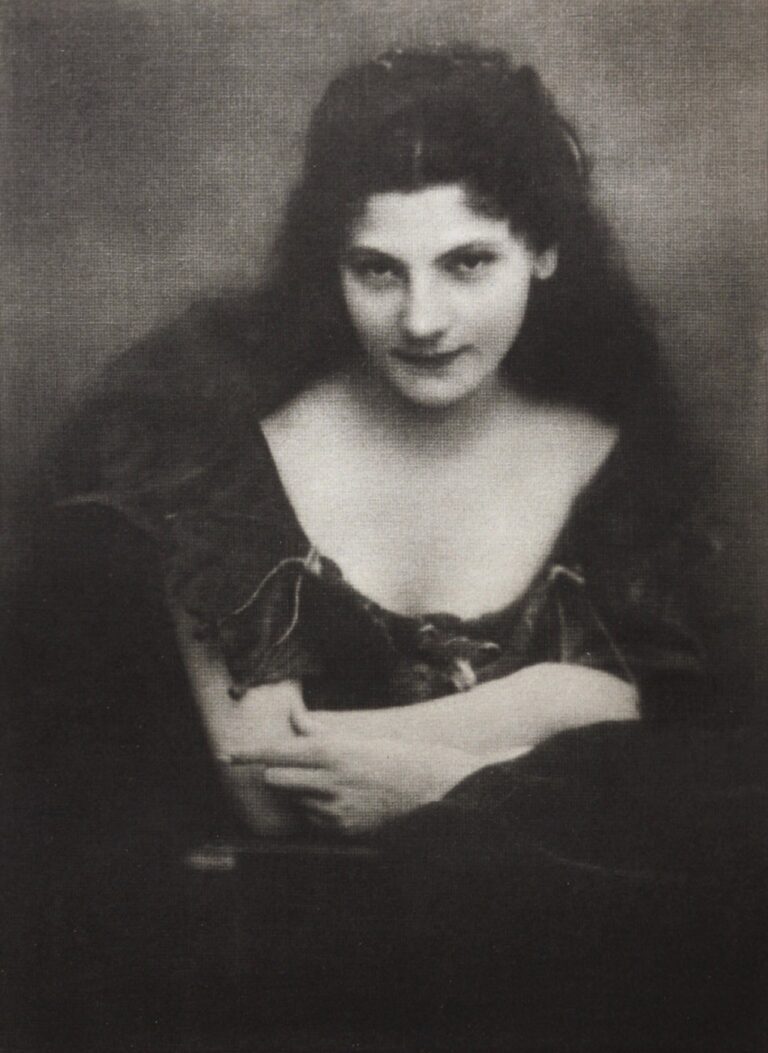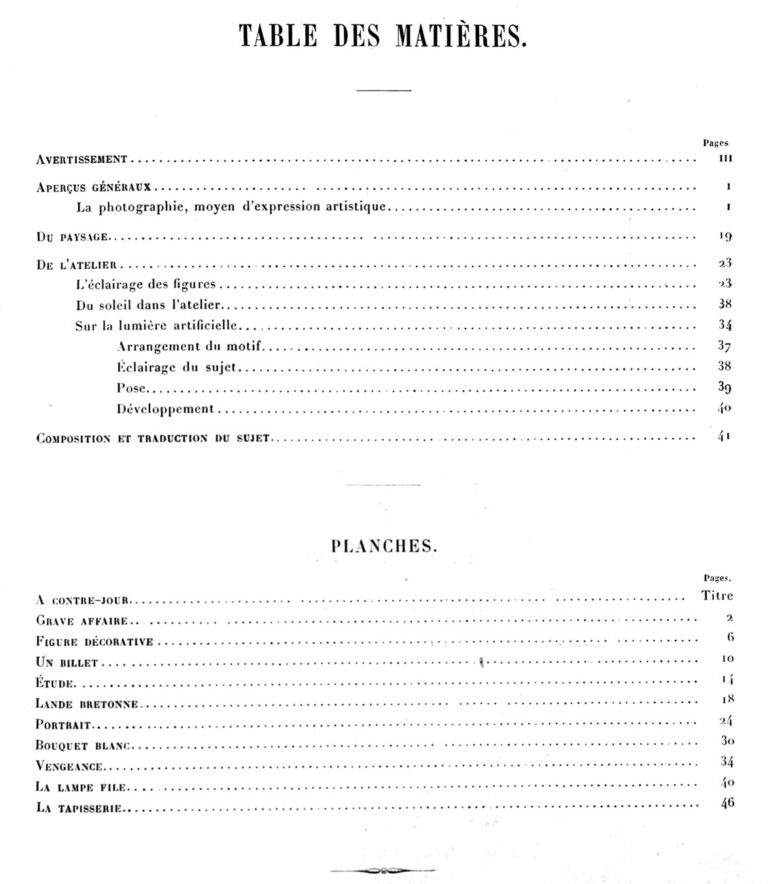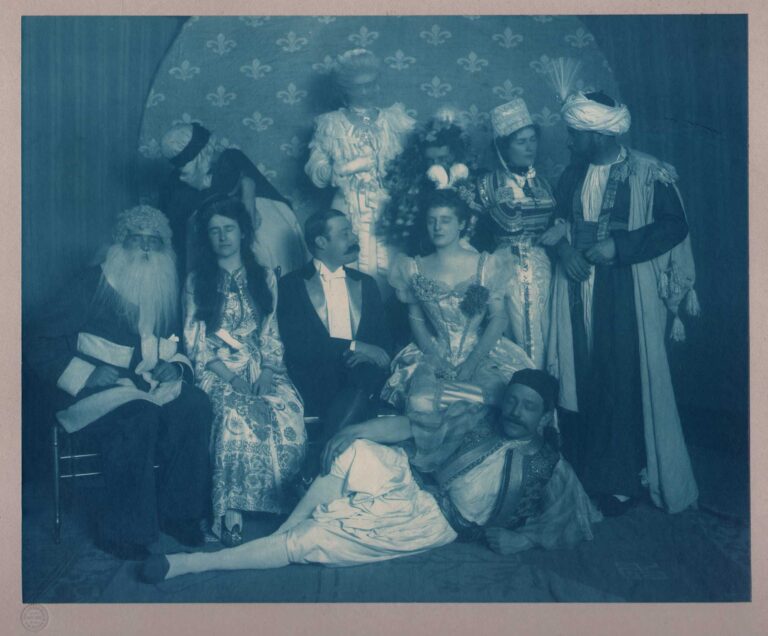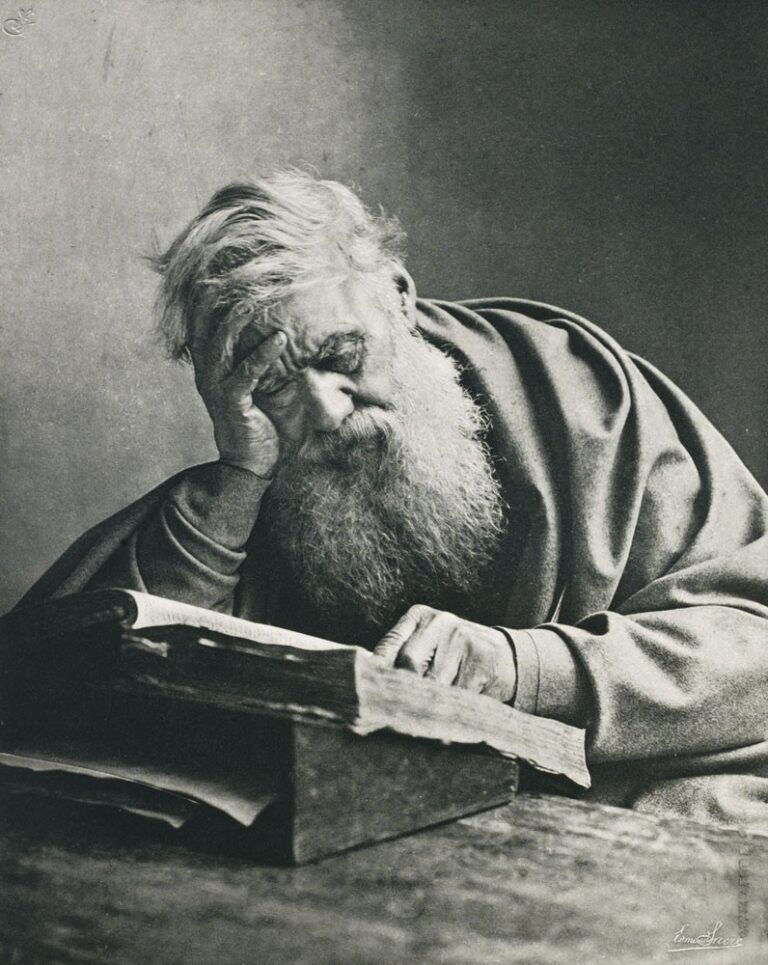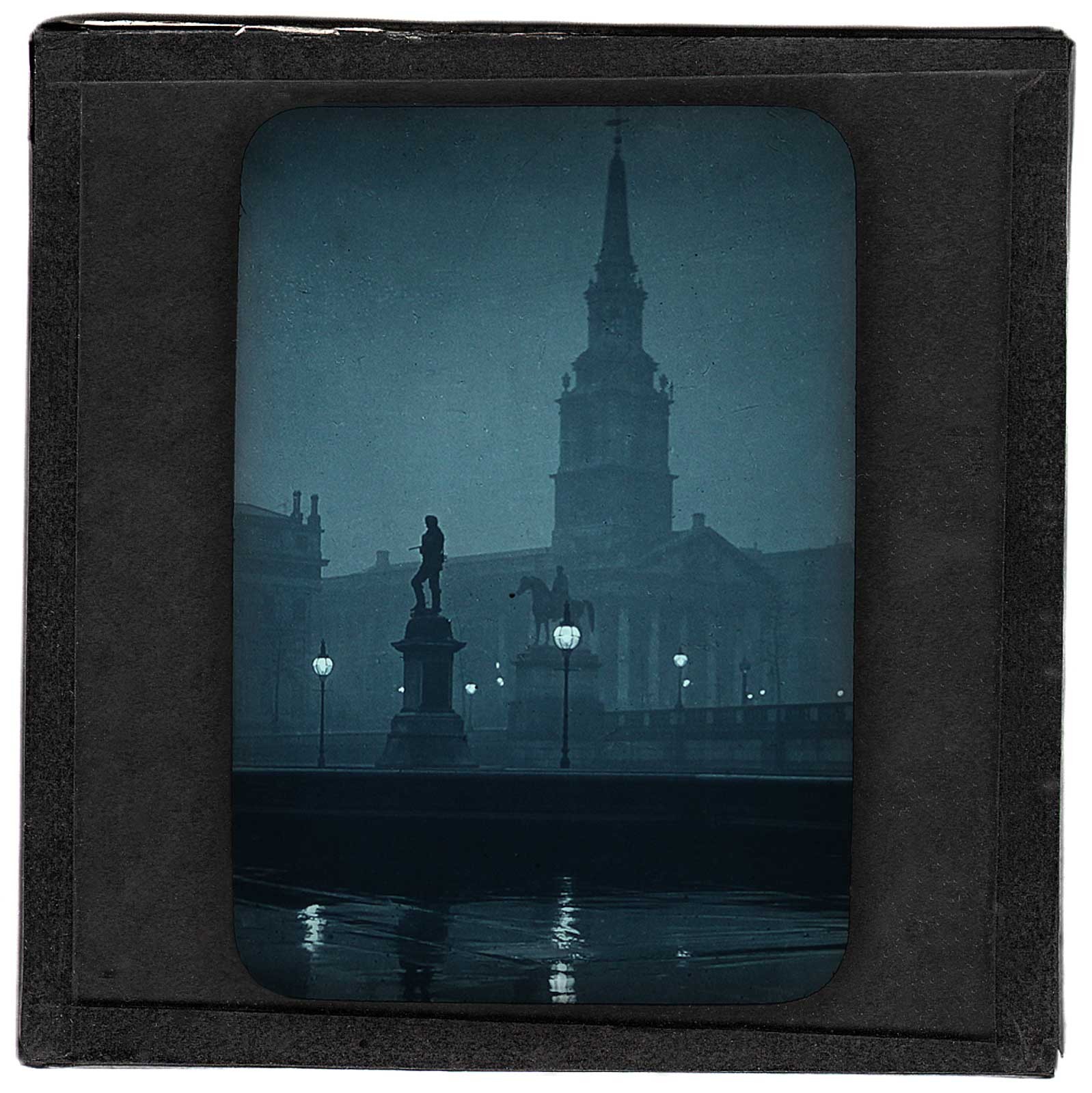
St. Martin’s Church — Wet Evening
British photographer Paul Martin, (born France: 1864-1944) considered one of the first photojournalists in the world, is perhaps best remembered today for a series of nighttime photographs of London taken between 1895-96. These groundbreaking views, which he titled Around London by Gas Light, (1.) earned him the Royal Photographic Society’s Royal Medal in 1896 and admiration the world over. (2.) In the 1977 volume Paul Martin: Victorian Photographer, these nighttime pictures were described:
They took the photographic community by storm, not only in the year that they were first presented, but for many years afterward, being praised in such terms as “among the most striking achievements of modern photography. (p. 56)
Publicity in London & America: Paul Martin’s Night Photographs
In the fall of 1896, London’s Amateur Photographer published a two-part article by Martin entitled Around London by Gaslight. In America, London By Gaslight was the condensed version published in the November, 1896 issue of The American Amateur Photographer, printed below in its entirety.
London By Gaslight.
AT the exhibition of the Royal Photographic Society a medal was awarded to Paul Martin for a set of lantern slides of what he called a new phase of photography, photography by gaslight, and he has written an account of his methods and experiences which appeared in the The Amateur Photographer, together with several half-tone engravings from prints made from the negatives, that were beautifully effective, especially those taken on wet nights, in which lights are reflected from the wet pavements, an example of which we reproduce. He begins by telling of his failures, and how he overcame the most serious of them by the use of backed orthochromatic plates and beginning the exposures while there was still a trace of the parting day.
The following extract will give some idea of his methods, and probably induce some of our readers to try this “new photography.”
All my first efforts were made on the Embankment, which when I commenced was practically deserted, but as time went on it became more and more patronized. As I mentioned previously, I used a hand-camera for the purpose, a “Facile” covered with a strong leather case, which renders it weather-proof and does not attract too much attention; and only on two or three occasions did I use a tripod to rest it upon. One can generally find somewhere to rest it on or to strap it to and thereby not attract unnecessary attention, but do what you will, you will never disguise it so as not to be recognized by most people as a “photo machine,” and then the fun commences.
Whilst on the Embankment I had some amusing experiences, for no doubt frequenters of that locality are not used to seeing anybody sitting on the coping on a rather cold night, and naturally all sorts of thoughts enter their heads. One young man, thinking there was a chance to appear as principal witness in a suicide case, calmly watched me from behind a tree some thirty yards away until the exposure was over, which meant some twenty minutes as his share.
Those who did not recognize it as a camera would invariably, after walking by a few yards, look intently into the water just below where I was sitting, being under the impression, no doubt, that I was fishing. One gentleman, who was with a friend, I presume, and who must have had a slight knowledge of photography, seeing what sort of subject I was attempting, qualified me to his friend in rather audible tones, using a forcible expression, well known, but never seen in print. It was my second attempt, and when I was developing that plate I granted then that he was not far wrong. “When I took the Embankment on a wet night I was quite unprepared for the occasion, but the effect was so striking that I did not object in getting wet through in securing it.
During the exposure a representative of the law made his appearance and inquired what I was up to. “Taking a wet-night effect,” I replied, meekly. I think he concluded I was a lunatic at large, taking, as he thought, an impossible subject. He had heard of the X-rays, so then came my chance. “Oh, yes, bless you! “I said, “we can do anything nowadays with photography—photograph through a brick wall at a pinch.” Wonderful! he thought; but thinking I had overstepped the mark, I advised him to purchase some “clearing solution” at my expense, a line of argument I find generally appreciated by the force.
Similar and other varied experiences I had by the score. The trouble in Trafalgar Square was that, my camera resembling no doubt an infernal machine, inquiries were made by the police to that effect, when I would assure them that it was not explosive, but only snap-shot.
Working on wet nights has a double advantage—that of increasing the pictorial effect and that of decreasing the inquisitive onlookers. I naturally became bolder with success, and my last effort proved too much even for me. It was the fountain in Piccadilly Circus, with the strong lights of the Criterion behind, one of the best effects of its kind in London. It was an awkward one, I knew, to tackle, owing to the amount of traffic. I selected a time when I thought there would be least traffic, and then set up my camera, this time on the tripod, as there was no resting-place suitable for the point of view, excepting, perhaps, the first-floor window. I was congratulating myself on the scarcity of the traffic, and in due time the exposure commenced. Now commenced a scene which recalled to my mind Jameson’s famous fight, with which the papers then were filled, to the effect that when the fighting commenced scarcely any of the enemy were to be seen, but a little while after they were surrounded on every side. I was in a somewhat similar position. Cabs and carriages came from every direction, to say nothing of the people who stopped just to drop a kind remark. The length of the exposure is such that no notice is taken of moving objects, but the lights of cabs leave their impression on the plate. Knowing this, I used to hold something in front of the lens when I saw one that was likely to do mischief. I felt so ashamed at being the center of attraction for once in my life, that I somewhat curtailed the exposure, and resolved that this should be the last. The result was curious. The effect is there to a great extent, but cut up by a network of light streaks, resulting from the cabs that I had failed to shut out. This completely satiated my desire for night effects in the busy metropolis.
Nevertheless, there is plenty of scope yet in this direction, and many will no doubt try their hands in the suburbs and at the seaside. The plates I used were principally the isochromatic medium, stop f/8, and the exposures varied from ten to forty-five minutes, according to the amount of daylight that was left in the sky, and also to the amount of light one wished represented in the lamps. Ten minutes or thereabouts gives the lamps in the foreground with the flame, showing distinctly from the halo around. Twenty minutes and over gives the entire lamp as a spot of light. Faster plates no doubt might be used, and a corresponding reduction in the exposure.
The idea of the long exposure is to give time for the reflections from the lamps to be well impressed, as otherwise the exposure for the lamps alone would not require as many seconds. One can hardly expect to succeed at the first attempt; but trial exposures can very well be made from one’s window, taking care to include a lamp, which will act as a guide. The main idea is, say, on a wet night you wish the reflections to tell out strongly, and you estimate the exposure at twenty minutes or so; you must arrange in the exposure to include the last five minutes or so of daylight, if one can call it such, before night sets in; or you may select a moonlight night for a subject, and, providing no lamps are in the immediate foreground, you may give with safety three-quarters of an hour and more.
Any developer may be used that is used for under exposed plates, preferably a weak one. The printing of the subjects depends to a great extent on individual tastes. Carbon workers have a great advantage over others, as they can make sure of the color they require without the risk of toning; the most suitable colors are dark blue, black and sea-green on toned papers.
The same applies to lantern slides, and any brand that gives dark blue tones are an advantage. One particular brand is on the market, where any tone from a yellow to a blue may be obtained, but unless the making of them has improved, I would hardly recommend them, for great as was the trouble I experienced in getting the negatives, it was a pleasure as compared to the making of the slides. I did not have to bother my friends for cover glasses, but simply took about a couple of dozen of the failures and reduced the image completely, leaving only the gelatine coating, which was afterward stained yellow, and in that condition the best were selected for the cover glasses. This latter dodge is hardly necessary, as the yellow is somewhat lost on the screen, but it gives them a prettier effect by daylight. (pp 467-472)
From Wikipedia: St Martin-in-the-Fields is an English Anglican church at the north-east corner of Trafalgar Square in the City of Westminster, London. It is dedicated to Saint Martin of Tours. There has been a church on the site since the medieval period. The present building was constructed in a Neoclassical design by James Gibbs in 1722–1726.
Two statues can be seen in this magic lantern slide. At front left shows the silhouetted statue of British Army officer Major-General Charles G. Gordon. (1833-1885) Originally erected in 1888 at this location in Trafalger Square, the work was moved in 1943 during wartime and later erected in 1953 at its present location within a garden between the Victoria Embankment and the Ministry of Defence building. At background can be seen a bronze statue of King George IV (1762-1830) astride his horse.
Slide notes: small engraved manilla label on top left edge of slide: I St. Martin’s Church. —Wet Eveni(ng) (truncated). This example may be a duplicate slide made by Martin dating ca. 1900-1910 to fulfill the great interest the night series generated from lantern slide exchange clubs and the like, with few extant examples known today in the marketplace.
Provenance: acquired in September, 2018 by this archive from an antiques dealer in Staffordshire, United Kingdom.
1. The Forty-first Annual Exhibition volume of the Royal Photographic Society lists the following entry for Paul Martin:
360 Twelve Lantern Slides —Around London by Gas Light
St. Martin’s Church —Wet Evening.
Cleopatra’s Needle —At Dusk.
The Alhambra at Night.
The Union Club on a Wet Evening.
Big Ben.
A Weatherproof Lion —Trafalgar Square.
Houses of Parliament from Embankment.
The Last Gleam of Twilight —Clapham.
The Empire on a Wet Night.
A Wet Night on the Embankment.
2. Alfred Stieglitz in New York is known to have credited Paul Martin as inspiration for photographing Manhattan at night shortly after Martin earned the RPS medal.
